Imagine someone who had been following the Saudi League, but took a few months off and has now returned to catch up. The current scenario might surprise them: several prominent players from elite European clubs have joined an Asian league during one summer, which is entirely unexpected.
Saudi Arabia’s new approach, orchestrated by the Public Investment Fund (PIF), marks a departure from previous strategies seen in China and America. Unlike those countries, Saudi Arabia is now acquiring players in their prime from the European leagues, including famous names like Roberto Firmino, Riyad Mahrez, and N’Golo Kanté from the Premier League and, before them, Cristiano Ronaldo.
The Asian giants, Saudi Arabia’s Al Hilal, are on top of these clubs. Under the guidance of experienced coach Jorge Jesus, the historic Saudi champion has assembled an impressive squad that features stars such as Kalidou Koulibaly from Chelsea, Sergej Milinković-Savić from Lazio, Rúben Neves from Wolverhampton, Malcom from FC Zenit, and the recent addition the Brazilian star Neymar from PSG and Yassine Bounou. And in advanced negotiating with Fulham to sign Aleksandar Mitrović.
In this tactical analysis, in the form of a team scout report, we will provide an initial overview of Al Hilal’s tactics and playing style and their prospects for the season, now bolstered by a constellation of renowned players. We will also delve into how these deals, including Neymar, are likely to influence both the team, the league and Asia as a whole.
Saudi’s current strategy
In football, which stands as Saudi Arabia’s most popular sport, the nation is strategically procuring a substantial roster of renowned players. Notably, these players aren’t solely those seeking financial gains at the twilight of their careers but also young talents at the peak of their prowess. The offer of departing Europe comes with a need for compelling incentives, prominently including financial rewards.
The acquisitions of players like Moussa Dembélé (Al Ettifaq), Malcom (Al Hilal), Seko Fofana (Al Nassr), Sergej Milinković-Savić (Al Hilal), Marcelo Brozović (Al Nassr), Kalidou Koulibaly (Al Hilal), Jota (Al Ittihad), Alex Telles (Al Nassr), Édouard Mendy (Al Ahli), N’Golo Kanté (Al Ittihad), Roberto Firmino (Al Ahli), Karim Benzema (Al Ittihad), Riyad Mahrez (Al Ahli), Allan Saint-Maximin (Al Ahli), Sadio Mané (Al Nassr), and Neymar (Al Hilal) represent more than just individual initiatives. They embody a powerful, overarching trend driven by the state.
The acquisition of a club like Newcastle United and its subsequent qualification for the UEFA Champions League within a single season signifies a collective effort rather than an isolated endeavour. This trend is emblematic of a broader shift. The future trajectory, however, remains uncertain, whether the momentum will be sustained or whether it will be as fleeting as its rapid ascent.
In-possession play
In the dawn of a new era at Al Hilal, Jorge Jesus, which is not his first experience there, uses 4-2-3-1. The bedrock of this approach centres on verticality, prioritising swift advances over possession or control of the opposition. The emphasis lies in surprising opponents with incisive vertical passes, expeditiously aiming for the goal.
It’s inevitable that numerous tactical shifts will transpire following the infusion of new deals. Broadly speaking, Al Hilal, under the Portuguese, aspires for a dynamic framework, placing a premium on velocity and exploiting the Y-axis more than the X-axis, resulting in a sharp and aggressive strategy.
Contemporary football pivots on the pursuit of superiority across all facets of play. Thus, initiating play from the back is orchestrated with the fewest participants necessary while maintaining efficacy (the least number of players as possible but as many as needed).
In the present scenario, opposing teams do not frequently engage in high pressing against Al Hilal during this deeper phase. Generally, Al-Za’eem typically uses seven players—a goalkeeper, the back four, and two defensive midfielders—when facing the press, with the No. 10 player dropping back when required.
Yassine Bounou’s inclusion is poised to enrich this deeper phase of play significantly. His adeptness at initiating the build-up through precision passes, directing the play rightly and adept decision-making under pressure is one of his prowess.
Bounou’s addition even extends to switching to 4-2 (involving the goalkeeper), which increases the vulnerability of the opposition’s defensive line by exposing it to five players instead of the standard four or three. The visual below illustrates Bounou’s passing distribution during his last season at Sevilla, further underscoring his standing as one of the global premier goalkeepers.
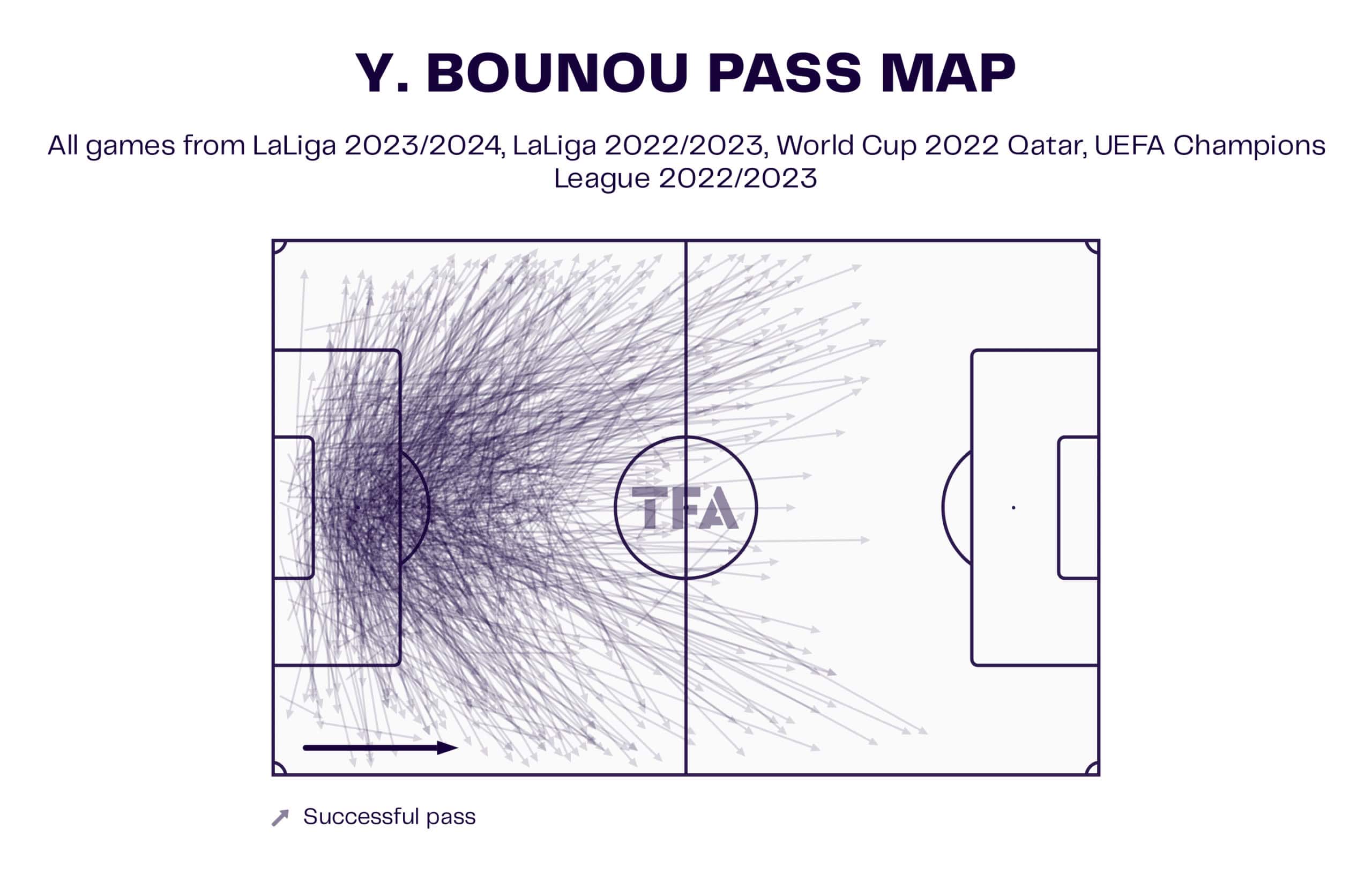
In the progression phase, Jorge Jesus utilises the dynamic concept of the “Salida Lavolpiana,” a variation where a midfielder drops deep to create a back-three, initiating a positional motion that evolves into 3-1-6.
After experimenting with Rúben Neves as a sole pivot, Jorge Jesus shifted to 4-2-3-1, introducing Saudi midfield star Mohamed Kanno alongside Neves. Kanno’s inclusion significantly supported the team’s ability to dictate the tempo of play.
Within this 3-1-6, either Neves or Kanno commonly drops back between or alongside the centre-backs, who then spread wide to outplay one or two opposing strikers. Concurrently, both wingers adeptly drift into the half-spaces while the full-backs dynamically command the flanks through overlapping.

In the 1st line, Al Hilal’s key objective revolves around executing laser-like vertical passes, effectively breaking through the opposition’s lines. This is facilitated by the fluid movements of the No.10, Sergej Milinković-Savić, and the inside wingers (Michael/Malcom and Salem Al-Dawsari) as they navigate between the lines, creating opportunities for dynamic playmaking.
After receiving the ball behind the opposition’s midfield by the roamers, Al Hilal likes to utilise one-touch, one-twos, and third-man combinations.
Their attacking approach closely resembles their opening goal against Abha in their inaugural league match. In this goal, the team configured in a 3-1 setup to outplay Abha’s strikers.
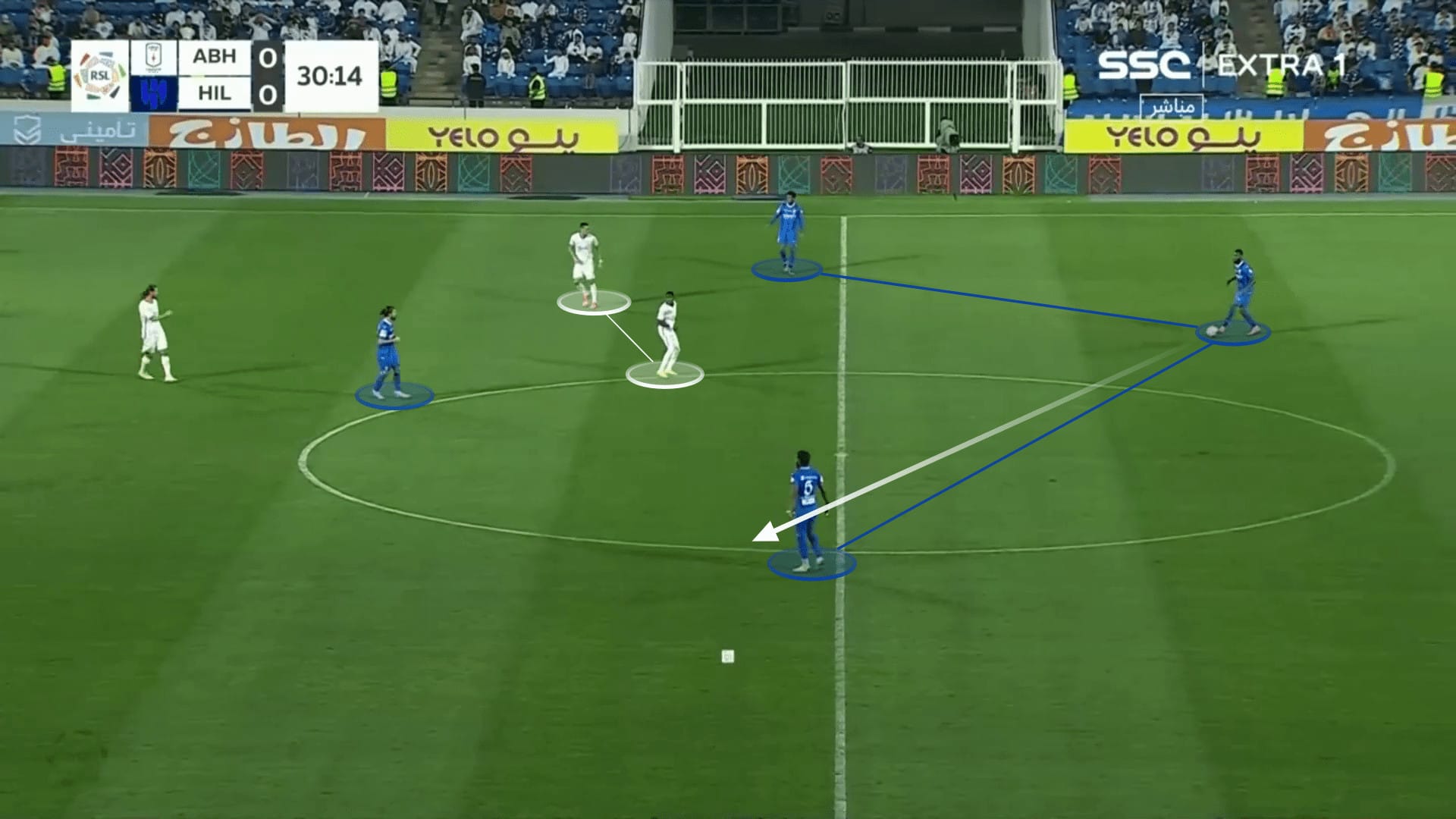
Subsequently, Ali Al-Boleahi executed a vertical pass towards the six players positioned between the lines. The dropping striker, Abdullah Al-Hamdan, expertly received the ball, pulling a defender from the backline. Meanwhile, other roaming players created confusion within the defensive block.
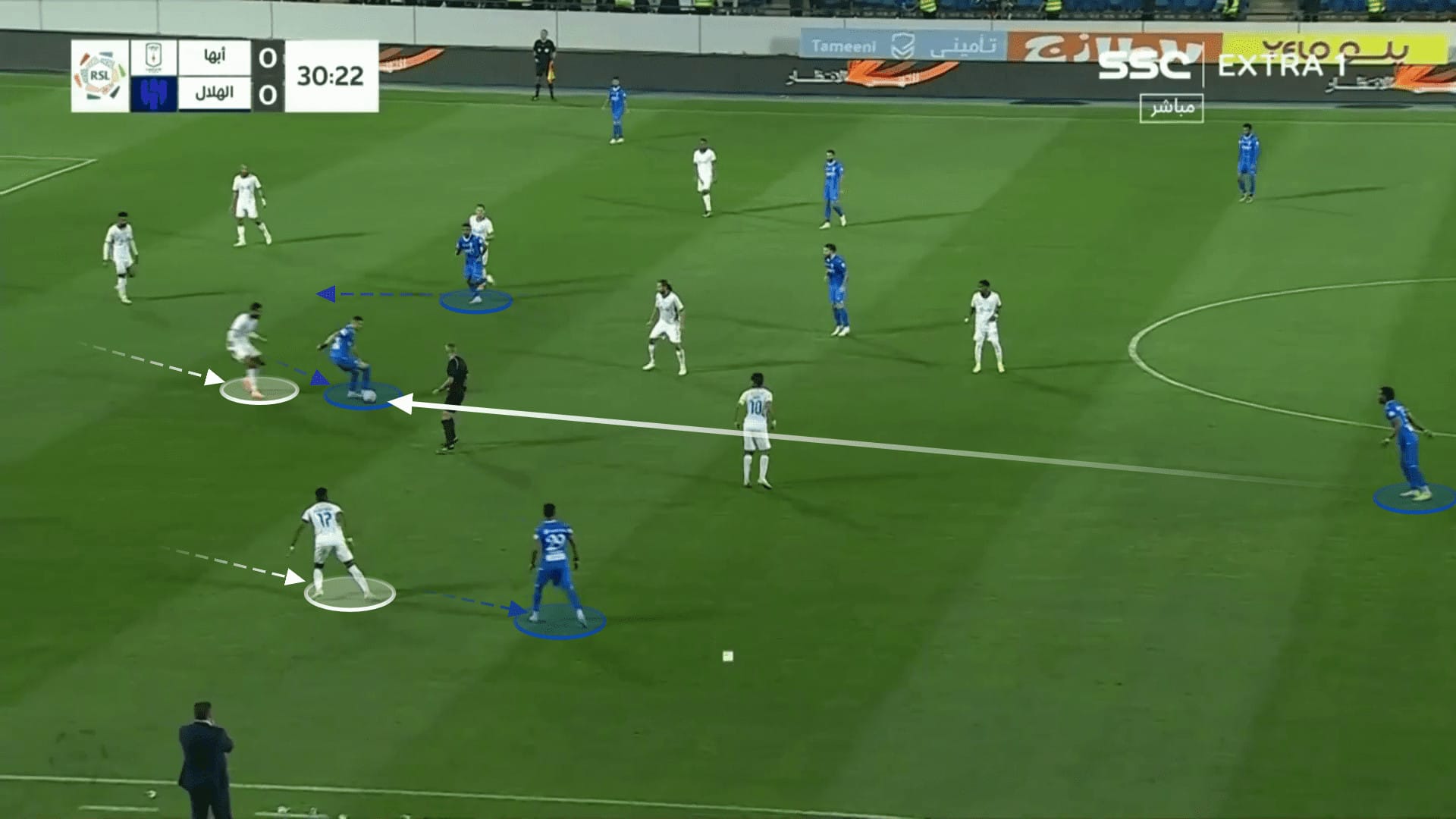
Once the dropping striker Al-Hamdan dynamically turned and delivered a precise pass to the overlapping left-back, Nasser Al-Dawsari. The latter skillfully cut the ball back to Malcom, who promptly found the net.
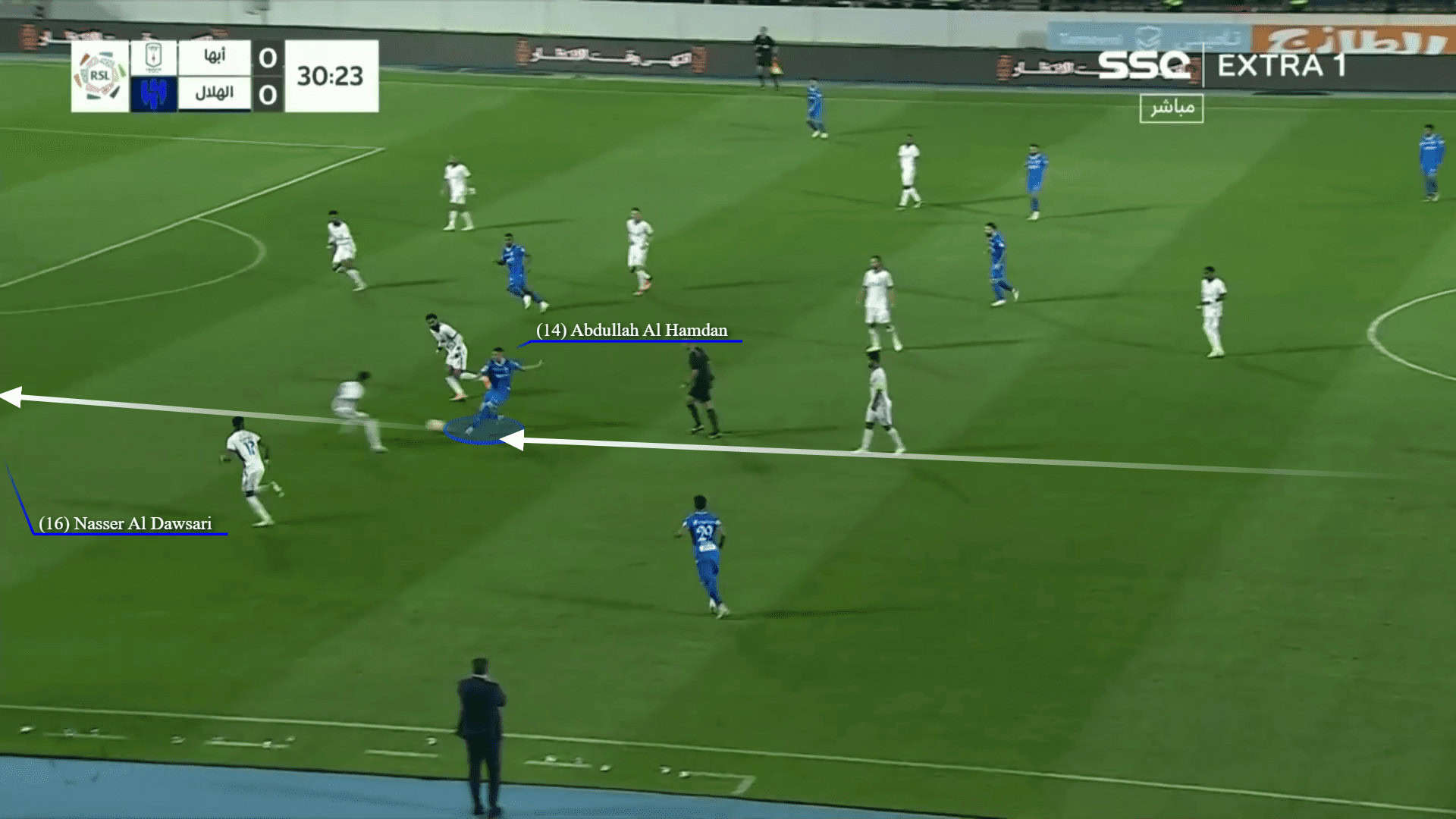
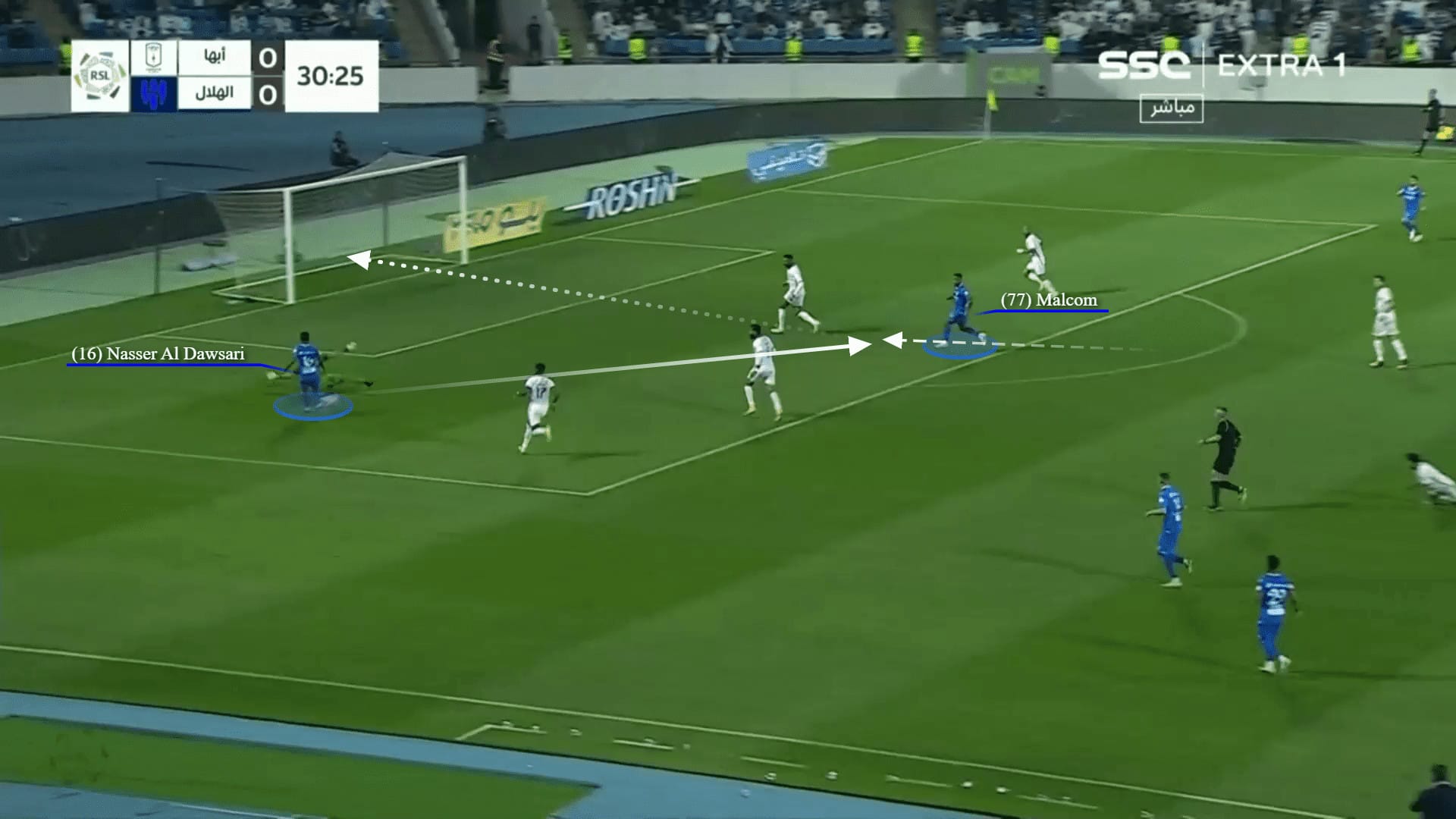
Indeed, Al-Hilal’s offensive methodology under Jorge Jesus predominantly centres on a direct approach, characterised by two distinct avenues: deploying long passes behind the defensive line to exploit attacking spaces with swiftness or swiftly operating through the defensive block via rapid combination play, as exemplified in the diagram below.

Furthermore, it capitalises on rapid transitions, leveraging the speed of players like Malcom and Michael to swiftly transition and exploit counterattacking opportunities.
Undoubtedly, this approach places a significant demand on full-backs who must possess robust physical attributes to effectively cover extensive defensive and offensive areas. The right side boasts the presence of Saud Abdulhamid, regarded as one of Asia’s premier players.
However, challenges arise on the left side with Yasser Al-Shahrani, whose performance has seen a decline in recent times. In response, the possibility of Al Hilal buying an internationally left-back. Speculation has linked the team to players like Lucas Digne, Marcos Acuña, and Alex Sandro.
Al-Hilal faces some issues within this system, primarily stemming from its predominant vertical mindset that places less emphasis on ball possession and control over the opponent. Consequently, the team tends to lose the ball because of the verticality.
Furthermore, the team operates the 3-1-6 in-possession structure (3-1 rest defence), leaving significant spaces that the opposition can exploit during transitions. To this vulnerability, proactive and aggressive counter-pressing is critical. The centre-backs must be more proactive stance to mitigate potential threats effectively.
What after Neymar
‘I am here in Saudi Arabia, I am Hilali.’ — Neymar
The addition of Neymar and the imminent signing of Aleksandar Mitrović signal forthcoming changes within the team’s shape.
Mitrović’s incorporation as a striker renowned for his physical prowess is poised to enhance the efficacy of vertical passes. His ability to retain possession under pressure and draw the attention of opposing defenders, often engaging one or two, is expected to amplify the impact of the verticality.
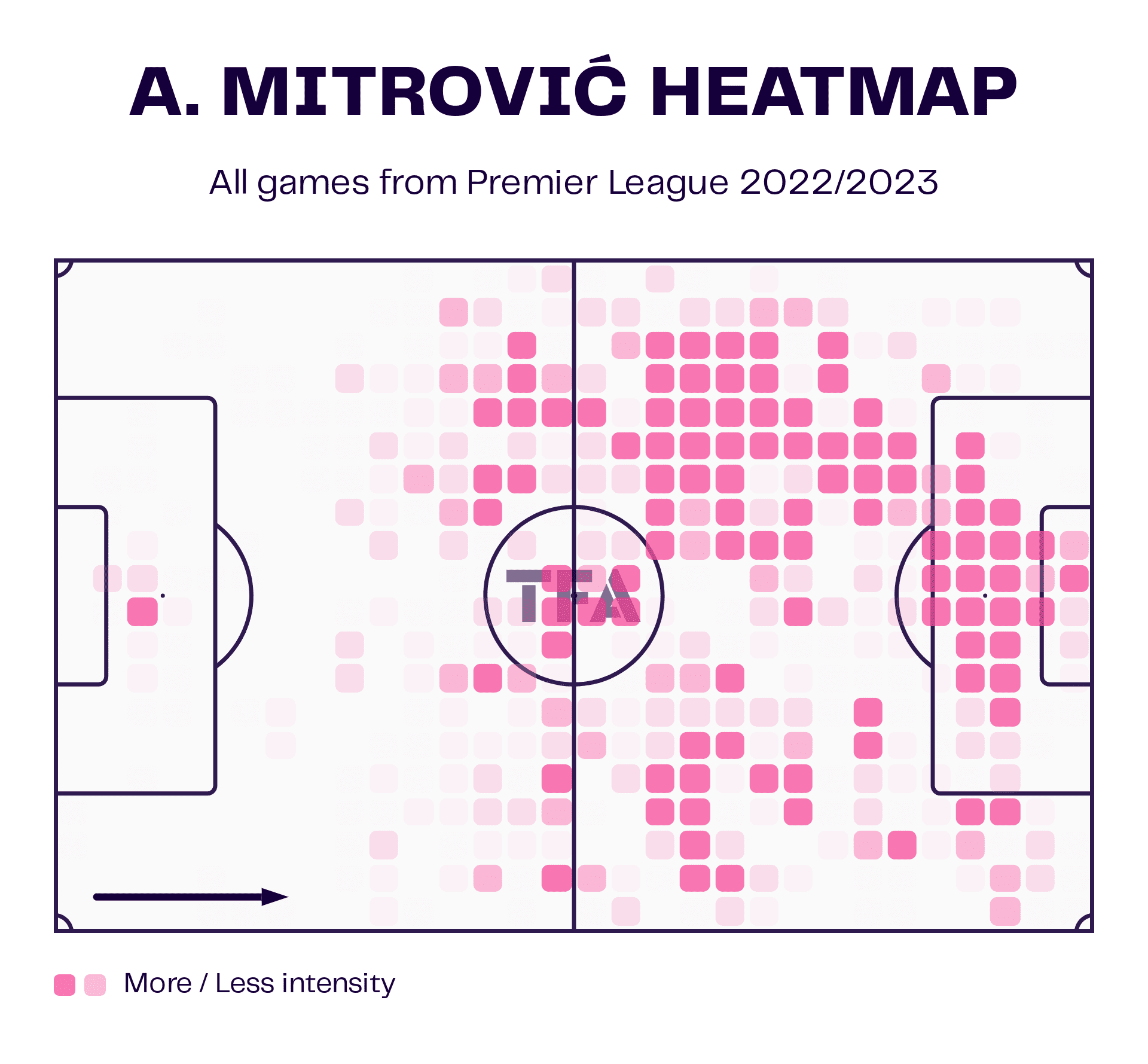
An increase of more than 20 goals over the course of the season can be confidently anticipated from Mitrović’s contributions. This also would mean relying on Malcom on the right flank and Michael sitting on the bench.
Indeed, the inclusion of Neymar, the best Brazilian over the past decade, holds immense significance both on and off the field. Neymar’s presence introduces a choice of positioning – either as a left-winger or occupying the No. 10 role. This decision entails certain sacrifices on the tactical front as well.
In one scenario, the team might opt to retain the 4-2-3-1, with Neymar operating from the left flank. This would potentially entail a decision to forego Salem Al-Dawsari, a prominent talent in Saudi Arabia and Asia.
Alternatively, if Juses picks to position Neymar as No. 10, could involve the exclusion of Mohamed Kanno. In this setup, Sergej Milinković-Savić might drop back alongside Neves while Neymar orchestrates play from the central position in the 4-2-3-1 or even switch to 4-1-4-1.

Opting to exclude Kanno from the lineup would potentially rekindle the initial tactical quandary we previously discussed. Kanno’s compatibility alongside Neves has been evident. In addition, the presence of Sergej Milinković-Savić in any deep role next to Neves can limit his offensive roles, which he is very distinguished for.
This decision will require careful consideration to ensure that the team’s strengths are harnessed to their fullest potential while accommodating Neymar’s role effectively.
Tactically, should Al-Dawsari’s role be relinquished, the team could potentially revert to the earlier discussed 3-1-6, utilising Kanno. However, if Kanno were to be omitted, it’s plausible that the coach might persist with the existing strategy. In this scenario, instead of relying on SMS in the pivotal role, the coach might opt to have one of the full-back inverts, typically Saud Abdulhamid or based on the attributes of the new left-back, to establish a 3-1 or 2-2 base.
Concurrently, Malcom would hold his position on the right flank, effectively stretching the width. Neymar and Al-Dawsari would operate within the intermediary zones as roamers, strategically choosing the opportune moments to drop and receive.

Summary
The analysis discusses Saudi Arabia’s new approach to acquiring prominent football players, departing from previous strategies seen in China and the USA. Al Hilal have assembled an impressive squad under coach Jorge Jesus, featuring stars like Yassine Bounou, Neymar and others; there are many ways in which these new stars could fit together under their tactician, and we hope our analysis has shone a light on some.





Comments